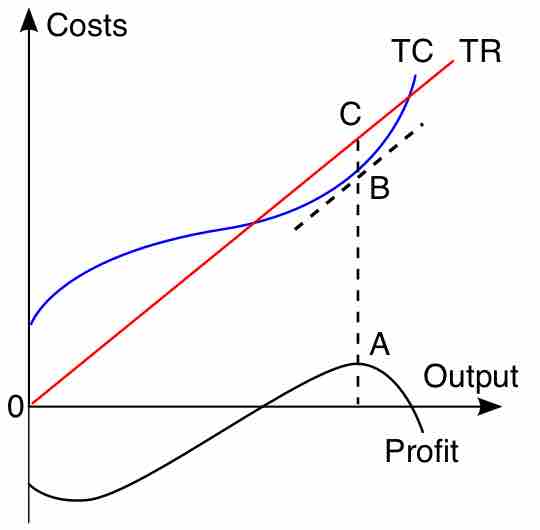Cost Curve
In economics, a cost curve is a graph that shows the costs of production as a function of total quantity produced. In a free market economy, firms use cost curves to find the optimal point of production (minimizing cost). By locating the optimal point of production, firms can decide what output quantities are needed. The various types of cost curves include total, average, marginal curves. Some of the cost curves analyze the short run, while others focus on the long run.
Profit Maximization
Profit maximization is the short run or long run process that a firm uses to determine the price and output level that returns the greatest profit when producing a good or service.
Graphing Profit Maximization
There are two ways in which cost curves can be used to find profit maximizing quantities: the total revenue-total cost perspective and the marginal revenue-marginal cost perspective.
The total revenue-total cost perspective recognizes that profit is equal to the total revenue (TR) minus the total cost (TC). When a table of costs and revenues is available, a firm can plot the data onto a profit curve. The profit maximizing output is the one at which the profit reaches its maximum .

Total cost curve
This graph depicts profit maximization on a total cost curve.
The marginal revenue-marginal cost perspective relies on the understanding that for each unit sold, the marginal profit equals the marginal revenue (MR) minus the marginal cost (MC). If the marginal revenue is greater than the marginal cost, then the marginal profit is positive and a greater quantity of the good should be produced. Likewise, if the marginal revenue is less than the marginal cost, the marginal profit is negative and a lesser quantity of the good should be produced .

Marginal cost curve
This graph shows profit maximization using a marginal cost curve.
Profit maximization is directly impacts the supply and demand of a product. Supply curves are used to show an estimation of variables within a market economy, one of which is the general price level of the product.